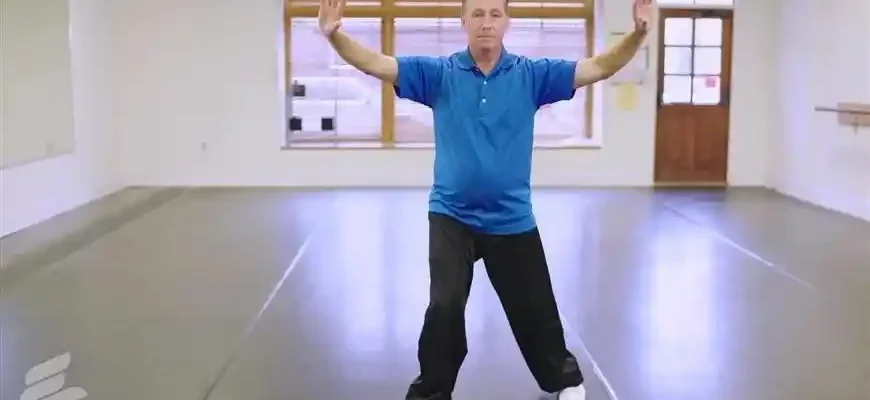Tai Chi, also known as Tai Chi Chuan, is often described as “meditation in motion.” A graceful and fluid practice, it combines slow, deliberate movements with deep breathing to promote mental clarity, physical balance, and emotional calm. While its origins are rooted in traditional Chinese martial arts, today Tai Chi is most commonly practiced as a low-impact exercise for wellness, stress reduction, and overall health.
Why Should You Practice Tai Chi?
The appeal of Tai Chi spans across cultures, ages, and health conditions. Whether you’re a young professional stressed from work, an older adult seeking to improve mobility, or someone managing chronic pain, Tai Chi has been scientifically proven to offer numerous health benefits. Studies show it can help improve balance, flexibility, and strength, reduce stress and anxiety, and enhance overall well-being.
What Does Science Say About Tai Chi?
Numerous scientific studies support the benefits of Tai Chi. According to research from the National Institutes of Health (NIH) and other reputable organizations, Tai Chi has been found to:
- Improve Balance and Fall Prevention: Tai Chi has been shown to reduce the risk of falls, especially in older adults. A systematic review of studies published in The British Journal of Sports Medicine found that Tai Chi significantly improved balance in people over 65 years old.
- Reduce Stress and Anxiety: The slow, mindful movements of Tai Chi help activate the parasympathetic nervous system, which promotes relaxation. This can lower levels of cortisol, the stress hormone, and improve mood. A meta-analysis in Frontiers in Psychology confirmed that Tai Chi has significant psychological benefits, including reduced stress and anxiety.
- Enhance Flexibility and Joint Health: Tai Chi involves a full range of motion, which helps lubricate the joints and improve flexibility. Studies, including one published in The Journal of Pain in 2013, showed that it can help reduce the severity of conditions like osteoarthritis.
- Boost Cardiovascular Health: Regular Tai Chi practice has been associated with improved cardiovascular function. According to the American Journal of Preventive Medicine, Tai Chi can reduce blood pressure and improve heart rate variability, key indicators of heart health.
- Improve Muscle Strength and Endurance: While Tai Chi is low-impact, it still engages muscles, particularly those in the legs, core, and arms. Over time, this helps increase muscle tone, strength, and endurance, contributing to better overall fitness.
- Improve Cognitive Function: Research has also suggested that Tai Chi can have neuroprotective effects. A study published in The Journal of Alzheimer’s Disease indicated that Tai Chi may improve cognitive function in older adults and reduce the risk of dementia.
Getting Started with Tai Chi
If you’re new to Tai Chi or simply looking to refine your practice, here’s a step-by-step guide to get started.
1. Find a Comfortable Space
Tai Chi can be practiced anywhere: indoors or outdoors, in a park or your living room. The key is to choose a space that’s quiet and spacious enough for you to move freely without obstacles.

2. Learn the Basic Stances and Movements
Tai Chi is made up of various stances and movements that form a flow. The foundation of Tai Chi is its stance work, particularly the “horse stance,” where the knees are bent, feet shoulder-width apart, and the body remains low and centered.
The basic movements include:
- Parting the Horse’s Mane: A simple movement where you shift your weight from one foot to the other while making sweeping arm motions.
- Brush Knee and Push: Involves stepping forward and sweeping one arm down while the other is held up as if “brushing” the knee.
- Repulse Monkey: A backward step with arm movements that resemble a push or swipe.
3. Focus on Your Breathing
Tai Chi is often referred to as “breathing with the body.” As you practice, focus on deep, abdominal breathing. Inhale as you expand your belly and exhale as you contract it, coordinating your breath with each movement. This helps calm the mind and enhances the meditative quality of the practice.
4. Start Slow and Gradually Increase Intensity
Tai Chi movements are performed slowly to enhance focus and control. However, don’t rush—begin at a pace that feels comfortable. As you become more familiar with the movements, you can gradually increase your speed while maintaining control.
5. Join a Class or Use Online Resources
While you can practice Tai Chi on your own, many beginners find it helpful to take a class with a qualified instructor. Many Tai Chi classes are available in community centers, yoga studios, or martial arts schools. If you’re more of a solo learner, there are plenty of online courses, tutorials, and videos to guide you.
Common Challenges and How to Overcome Them
Tai Chi is a deceptively simple practice, but it can pose a few challenges, especially for beginners. Here are some common hurdles and how to handle them:
1. Difficulty in Staying Focused
Since Tai Chi is a form of moving meditation, it can be challenging for beginners to quiet their minds and focus on the movements. Solution: Start with short sessions (5-10 minutes) and practice deep breathing before and during your Tai Chi practice. If your mind starts to wander, gently bring your attention back to your breath and movements.
2. Physical Limitations
Some individuals may have difficulty with the deep stances or extended periods of standing, especially if they have mobility issues. Solution: Consult with your healthcare provider before beginning a Tai Chi practice if you have any concerns. Many instructors also offer modified Tai Chi practices for those with physical limitations.

3. Learning the Form
Tai Chi forms can be complex and involve many steps, which can be overwhelming at first. Solution: Break the form into smaller sections and practice each one separately. Be patient with yourself—Tai Chi is a practice that evolves over time. Don’t worry about perfection, just enjoy the process.
How Often Should You Practice Tai Chi?
While there’s no one-size-fits-all answer, most experts recommend practicing Tai Chi at least three times a week to see noticeable benefits. As with any form of exercise, consistency is key. Over time, you’ll find that your body becomes more flexible, your mind calmer, and your overall health better.
Real People, Real Opinions
Here’s what some practitioners of Tai Chi from different backgrounds have to say about the practice:
- Sophia, 62, USA: “I’ve been practicing Tai Chi for over 5 years now. It’s the only thing that keeps my arthritis in check and my stress levels manageable. I love that I can do it slowly and focus on my breath. It’s the perfect combination of gentle movement and deep relaxation.”
- Akira, 48, Japan: “Tai Chi has changed the way I approach exercise. Coming from a more intense martial arts background, I initially thought Tai Chi would be too slow for me. But now I appreciate the strength it builds in a very controlled, mindful way. Plus, it helps me sleep better.”
- Carlos, 34, Brazil: “I started Tai Chi to improve my posture and have more energy during the day. It’s made a huge difference, especially with my lower back pain from sitting at a desk all day. I’m more relaxed and focused, too.”
- Ava, 73, Australia: “Tai Chi has been a lifesaver for my balance and flexibility. At my age, it’s easy to feel stiff and unsteady. But practicing Tai Chi regularly has helped me feel more stable and confident, even when walking on uneven ground.”
- Liam, 27, UK: “I started Tai Chi as a way to de-stress after work. I never imagined it would have such a big impact on my mental health. It’s become my go-to for clearing my mind, and I feel more present in every part of my life now.”
Conclusion: Is Tai Chi Right for You?
Tai Chi offers a holistic approach to health that benefits both the body and the mind. It’s accessible, adaptable, and suitable for people of all ages and fitness levels. Whether you’re seeking relief from stress, better balance, or simply a way to stay active, Tai Chi can be an excellent addition to your wellness routine.
Just remember: Tai Chi is a journey, not a race. Stick with it, and over time, you’ll see the benefits. And who knows, you might even start enjoying it so much that it becomes an integral part of your daily life.
Happy moving!









